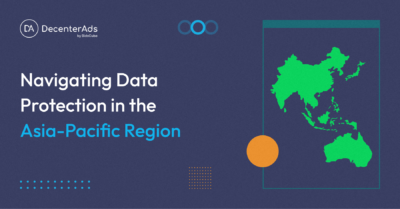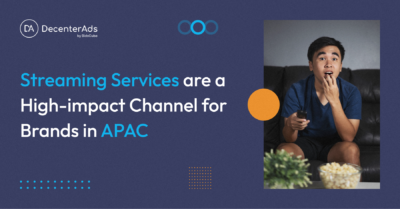Post-Holiday Sales: Top Strategies to Boost Conversions
Share
29 January 2024

Welcome the commencement of after-Christmas and post-holiday sales! As the curtain falls on the joyous holiday celebrations and we find ourselves nestled on the sofa (perhaps still recovering from a delightful food coma), it’s the perfect time to explore the enticing end-of-year sales offered by our beloved retailers. We’ve got even more after-Christmas CTV Trends For the Year 2024 and The Global Entertainment & Media Perspectives: Industry Review 2024 here. Don’t forget to bookmark this page because exciting new campaigns may emerge anytime!
Seasonal Marketing Campaigns Importance
Seasonal marketing campaigns offer a valuable opportunity to enhance sales conversions and cultivate customer engagement. By tapping into the festive atmosphere, these campaigns naturally encourage visitors to explore and consider your products and services. The holiday season, associated with returning home, evokes a positive atmosphere that resonates with potential customers.
When it comes to holiday season objectives, half of the survey participants in the total sample identified the primary goal as acquiring new customers. Following closely, at 44% for the overall sample, was the goal of boosting sales. Notably, the top priority for retailers was increasing sales, claiming the lead at 71%, underscoring the heightened competitive dynamics within the sector.
With the potential of seasonal marketing to effectively showcase and promote your offerings during festive periods. You can introduce new products with enticing special discounts, fostering increased sales conversions. This advertising strategy particularly impacts stores specializing in seasonal items like Christmas decorations or beach apparel.
As we can see, seasonal marketing campaigns provide a valuable opportunity to boost sales conversions and engage customers by tapping into the festive atmosphere. This strategic approach goes beyond mere marketing and gives a chance to captivate the audience with carefully crafted seasonal campaigns.
An example of a seasonal advertising campaign is a sales promotion during the winter period. You can create special winter-themed product bundles that include complementary items such as cozy blankets, festive scented candles, and holiday mugs. Offer these sets at a discount, encouraging customers to buy them as gifts or for personal use.
Sales Promotions Types
Regardless of size, numerous brands are poised to sustain substantial discounts on their products and services well into the post-sale season and throughout the winter holidays. Throughout this period, brands employ various promotional strategies, including:
- Cashback promotions
Many consumers agree that spending money feels less burdensome when accompanied by something in return. It’s akin to starting with a reduced cost and then having additional funds to acquire other coveted products. Moreover, often reciprocating in this manner fosters increased loyalty and business from customers. Such an offering creates a mutually beneficial scenario, proving to be a win-win for sellers and their customers.
- Lifestyle discounts
Exclusive lifestyle discounts cater to specific professions, age brackets, or demographics, often linked to an associated identification. These special offers are typically extended to teachers, students, veterans, and seniors. While these promotions can be ongoing, it’s worth noting that certain months and days of the year are dedicated to honoring specific groups, providing additional opportunities to leverage these discounts.
- Charitable cause promotions
Share the news with your customers that, for a designated timeframe, a portion of your sales will be contributed to a charity close to your heart or one aligned with your industry. Embracing cause-based marketing creates a triple-win scenario: the supported charity receives donations, you can showcase your brand values and attract like-minded customers, and your patrons feel satisfied knowing their money is making a positive impact.
- Free shipping and returns
Waiving shipping fees removes a significant hurdle hindering customers from finalizing their orders. This is crucial because hesitation can persist even among repeat customers who appreciate your offerings. Conversely, offering free shipping alleviates the concern associated with the potential inconvenience of paying for return shipping. You can foster a more seamless experience and, in turn, inspire greater loyalty and repeat purchases for your product-based business.
- Loyalty program promotions
Even without immediate payoffs, engaging rewards and loyalty programs greatly influence customers. Consider temporarily doubling or tripling loyalty points – a compelling incentive to spur purchases. Alternatively, enticing customers with a substantial initial point bonus upon joining your loyalty program can prompt them to make more extensive purchases.
A widely recognized option uses punch cards to reward customers with a special offer after a specified number of purchases. Some businesses even sweeten the deal by offering a modest discount each time customers use their cards. This cultivates customer loyalty through enticing rewards and ensures a sustainable revenue stream, keeping your business thriving even after extending discounts.
- Referral discounts
An excellent strategy to attract a continuous stream of new customers is to encourage your current patrons to refer friends or promote your business on social media and reward them for it. Consider providing monetary incentives that can be applied toward their next purchase. The decision to reward based solely on the referral or after the new customer makes a purchase depends on your preference. If you offer a discount regardless of purchase, consider setting a threshold for the number of referrals needed before the discount takes effect. For instance, you may provide a discount on the next visit for those who make three successful referrals. This fosters customer loyalty and creates a win-win scenario for existing and potential customers.
Benefits for Advertisers and Publishers in the Post-Holiday Sales Period
Post-holidays, consumer demand persists, yet competitors often reduce advertising efforts for a well-deserved break. Recognizing this gap in the market provides an opportunity to meet ongoing demand and gain an edge. While others pause, your business can step in, actively promoting sought-after products and services, positioning itself for growth and customer acquisition.
While there’s a common belief that post-holiday demand is consistently low, it varies yearly. The surge in holiday sales can create a misconception. To accurately gauge, compare post-holiday sales to figures from previous months, not just holiday sales. The global pandemic has shifted purchasing trends, favoring online shopping and extending the shopping season. As stay-at-home recommendations fluctuate, online shopping remains robust. Analyze data from previous years and months before assuming a decline in consumption.
Advertising online after the holidays has a notable advantage: decreased market competition leading to lower cost per click (CPC) and cost per impression (CPM). During the holiday season, businesses allocate significant budgets, causing a spike in CPM and CPC rates. Digital ads offer exceptional value post-holidays, allowing for a higher ROI due to reduced competition.
Post-holiday advertising preserves your brand’s awareness, fostering unaided awareness for a competitive edge and increased year-round sales. Consumers tend to choose brands at the forefront of their minds, requiring consistency and repetition. Skipping post-holiday advertising hampers marketing efforts and risks undoing brand awareness built before and during the holidays. Sustaining visibility ensures your brand remains a top choice in the hearts and minds of consumers.
Fueled by sustained customer demand and reduced competition, post-holiday advertising offers a chance to experiment with integrated marketing. This approach ensures a cohesive message across digital, print, and radio channels. Utilize the period after the holidays to test new digital ad campaigns, trying different platforms, target markets, messaging, and ad formats alongside radio and other channels. Seizing this opportunity benefits from discounted digital ads and helps mitigate the post-holiday sales slump by addressing unmet customer demand that competitors may overlook. It positions your business to thrive in a market where others may miss the potential opportunities.
How Can You Achieve High Revenues in the Post-Sale Period?
We advise all our entrepreneurial partners to adopt the following approach when promoting their businesses through our DSP. Unlock the potential of your programmatic strategy with two straightforward tips that will elevate your strategy to the next level.
- After examining numerous successful programmatic campaigns, we have identified and standardized the optimal creative sizes that generate the highest traffic:
- Banners: 320×50, 300×250, 320×480
- Native ads: starting from 300×250
- Videos: 1920×1080, 320×480, 480×320, 300×250
2. The textual component is equally crucial as visual pictures. Here are some fundamental best practices:
- Use imperatives: Clearly indicate the desired action through imperative language.
- Avoid pressure and create value: Instead of pressuring, create value that encourages commitment.
- Blend persuasive language with design excellence: Combine persuasive language with outstanding design to make your message stand out.
Tips on Planning Post-Holiday Campaign
Leverage the DecenterAds platform to tailor your marketing campaigns according to the specific product you’re promoting and align them seamlessly with your company’s objectives.
Set Your Target Audience
Enhance the impact of your seasonal marketing by segmenting your audience and understanding their needs and interests. Tailor your product promotions to align with these insights, maximizing the benefits of your efforts and fostering customer loyalty. Ensure an engaging experience through effective communication, aligning every message with your targets. Setting and segmenting your target audience is a powerful strategy for driving conversions.
Focus on Retargeting
After investing time and effort in elevating brand awareness and attracting new customers during the holidays, shifting focus post-season is essential. Instead of prioritizing immediate sales, concentrate on remarketing to the shoppers you engaged during the holiday rush, particularly those who didn’t purchase. While your website likely experienced a surge in traffic, not all visitors converted into customers. To optimize after-Christmas sales and prevent a slump, consider initiating retargeting ad campaigns to re-engage potential customers who showed interest during the holiday season.
Plan Your Campaigns Beforehand & Schedule It Wisely
Optimize your seasonal campaigns by planning ahead. Create a comprehensive marketing holiday calendar for organized and budget-friendly campaigns. Efficient scheduling ensures a smooth execution, and initiating detailed plans 2-3 months in advance allows for effective optimization.
Focus on Your Content Quality
Enrich your website with valuable content that goes beyond sales pitches. Consider curating well-written content related to specific periods for your blog. Enhance user-friendliness by incorporating well-crafted product information. Extend the value proposition to your social media channels for a comprehensive approach.
Do Competitor Research
Draw inspiration from your competitors’ past campaigns to fuel your creativity. Monitor the marketing activities of competitors in your industry, analyze the outcomes of their campaigns, and use this insight to enhance your strategies. However, it’s crucial to avoid direct copying. Instead, leverage this inspiration to infuse creative elements unique to your company into your seasonal campaigns.
Running Post-Holiday Promotions
During the promotion-heavy holiday season, transitioning abruptly to total prices post-holidays can surprise shoppers. This is particularly true for those seeking items they missed in December or eager to redeem gift cards. Consider alternatives to repeating holiday discounts. Explore incentives such as free shipping, buy-one-get-one-free offers, or introducing loyalty programs. These strategies maintain brand recall and provide opportunities to grow your customer base and enhance brand awareness.
Stay up to date with our company news

06 May 2024
Your inquiry met with our response, and in this article, we will delve into the Data Protection Laws of the APAC region. In August 2023, India passed the Digital Personal Data Protection Act (DPDP), a significant law for data protection globally. This comes as part of a broader trend in […]

21 April 2024
APAC video streaming has not only revolutionized the region’s film industry but also transformed consumer behavior. With the emergence of numerous platforms, viewers can now access content on any device, from mobile phones to large TV screens. This long-anticipated shift signifies an impressive change in how consumers engage with content, […]

04 April 2024
Ad servers are a part of advertising technology employed by publishers and advertisers. Their main role is to manage, distribute, and monitor online advertisements efficiently. They act as a central hub and ensure the seamless delivery of ads to website visitors and mobile app users. Ad servers are important components […]

